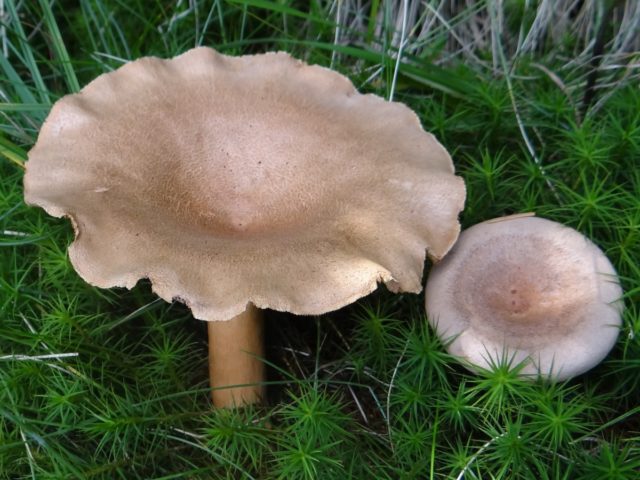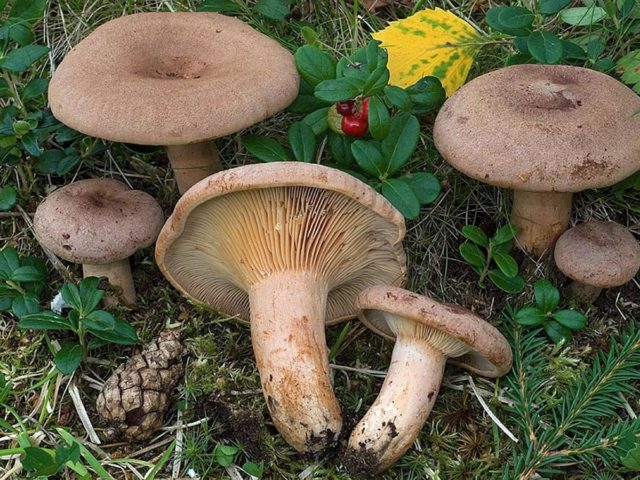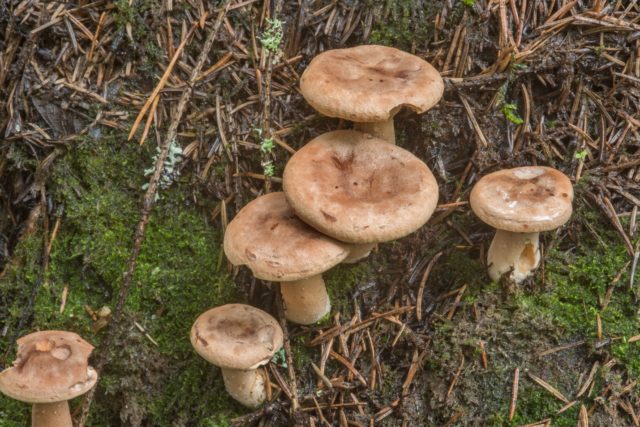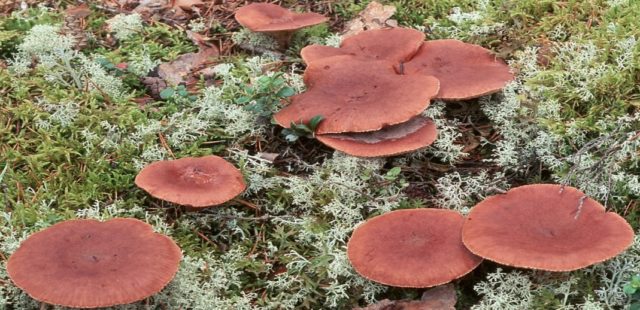Content
Gray-pink milky belongs to the russula family, genus Millechnik. It has a fairly large number of other names: common, amber or roan lactarius, as well as gray-pink or inedible milk mushroom. The Latin name is lactarius helvus. Below is a photo and a detailed description of the gray-pink milkman.
Where the gray-pink milky mushroom grows
Active fruiting of this species occurs at the end of August and the beginning of September under favorable conditions, but it occurs until the end of October until the first frost. The amber miller, the photo of which is presented below, grows everywhere, prefers a temperate climate. Forms mycorrhiza with coniferous trees, especially with pine or spruce, less often with deciduous ones, in particular, with birch. As a rule, it settles in acidified soil, occurs in marshy areas, in mosses.
What does an amber milkman look like?

In most cases, this species never grows one at a time.
The gray-pink milky is presented in the form of a large cap and a thick leg. The size of the cap in diameter varies from 8 to 15 cm. At the initial stage of ripening, the cap is rounded with curved edges downward, gradually straightening. Depressions or, on the contrary, tuberous outgrowth can form in the central part. With the development of the fungus, the appearance of two signs simultaneously is not excluded.
Painted in beige-gray with a pink or brown tint. The surface of the cap is velvety and dry. On the underside of the cap there are descending, medium frequency and thickness plates. At a young age, they are dyed in a milky color, over time they acquire darker shades that match the color scheme of the cap. Spore powder is yellow.
The flesh of a gray-pink lactarius is white, thick and brittle. It has a bitter taste and a pronounced spicy aroma. The excreted milky juice from the fruit bodies is watery, scanty, in old mushrooms it may be completely absent.
The next photo clearly shows the rather stocky leg of the amber milkman.

As a rule, the leg is straight, in rare cases it is slightly curved at the base
Its length can reach about 8 cm, and its thickness in diameter is 2 cm. It is painted in lighter colors than the cap. In young specimens, it is solid and strong, in mature ones, irregular cavities are formed inside. The surface is smooth without any additional build-up.
Edible or not gray-pink milky
The edibility of this species is a rather controversial issue. So, in foreign literature it is classified as a weakly poisonous mushroom, and the opinion of domestic experts is divided. Some attribute it to conditionally edible, others to inedible. As practice shows, because of the pungent taste and pungent aroma, not everyone dares to eat such a specimen.
It should be noted that the gray-pink milky is edible. However, a long soak is required before use.
False doubles

The mushroom exudes a strong aroma reminiscent of chicory
This species is rather difficult to confuse with other gifts of the forest due to its specific smell. However, inedible milk mushrooms are similar in appearance to some other varieties, the photos of which are presented below:
- Oak lump - refers to conditionally edible. Most often found in deciduous forests. Similar in size and shape to fruit bodies. A distinctive feature is the color of the cap, which ranges from yellow to brick in color with darker patterns.
- Bitter - belongs to the category of conditionally edible mushrooms, however, a long soaking is required before use. It differs from the species under consideration in the small size of the fruit bodies. So, the double's hat is no more than 12 cm in diameter. The leg of the bitter is noticeably thinner and longer, reaching about 10 cm. In addition, it is colored in a darker, reddish-brown tone.
- Zoneless Miller - is a small conditionally edible mushroom. Unlike the specimen in question, the twin's cap is flat, and its color varies from sandy to dark brown with a grayish tint. The leg is cylindrical, the length of which is from 3 to 7 cm, and the thickness is 1 cm in diameter.
Collection rules
Poisoning in search of a gray-pink milkman, a mushroom picker should know:
- You need to fold the gifts of the forest with their hats down. Allowed sideways if specimens differ in too long stem.
- To extend the shelf life of mushrooms, it is advisable to use a well-ventilated container; wicker baskets are best suited for this.
- When removed from the soil, the mushroom can be twisted or slightly swayed.
How to cook gray-pink milky
Before eating the gray-pink milky, like other relatives of this family, the mushrooms must be pretreated. It is as follows:
- After collection, it is necessary to clean up of debris.
- Cut off the legs.
- Soak the gifts of the forest in water for at least a day.
- After this time, they are transferred to a saucepan and cooked for at least 15 minutes. Mushroom broth is not subject to further use.
After completing the basic steps, the inedible milk mushroom can be fried, and they are especially tasty when salted with the addition of spices.
Conclusion
The gray-pink miller is quite widely known both in Russia and abroad. Despite this, not every mushroom picker is happy with such gifts of the forest because of the pungent smell and unpleasant bitter taste. However, this species has been assigned a category 4 of nutritional value, which means that it is edible, but only after prolonged processing.











